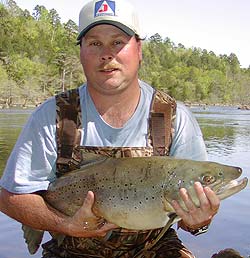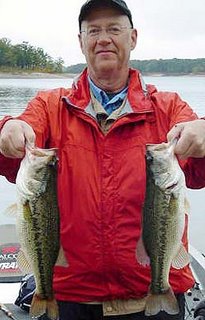Fisheries personnel with the
With bulldozers, backhoes and a good deal of imagination, streams biologists created a brand new ¼-mile trout stream, dubbed Lost Creek. Water was diverted into an ancient stream channel through dense woods and boulders creating a unique area for anglers to try to fool wary trout.
A separate ½-mile stretch of the Lower Mountain Fork River, known as the Evening Hole, once had a poor reputation among trout anglers. The warm, slow-moving, muddy water in the area was not favored by the rainbow and brown trout stocked by the Wildlife Department. However, streams biologists saw the potential in the area and felt if they could narrow the channel and provide more habitat, the trout, followed by trout anglers, would quickly begin using the area.
Biologists used 600 dump truck loads of gravel to narrow the river channel, causing the water to remain cooler and move through the Evening Hole faster. With the addition of large rocks, logs and islands, fisheries personnel transformed once sub-par trout habitat into a first class fishing area.
The Commission voted to establish special trout fishing regulations on the Evening Hole and Lost Creek areas. Upon gubernatorial approval, anglers must use only artificial lures with barbless hooks and may harvest only one rainbow trout and one brown trout 20-inches or longer per day. When the proposed regulations were opened to public input recently, the Department received overwhelming support of the new regulations which are geared toward providing a high quality trout fishery.
Editor’s Note: Story compliments of the Oklahoma Department of Wildlife Conservation.






